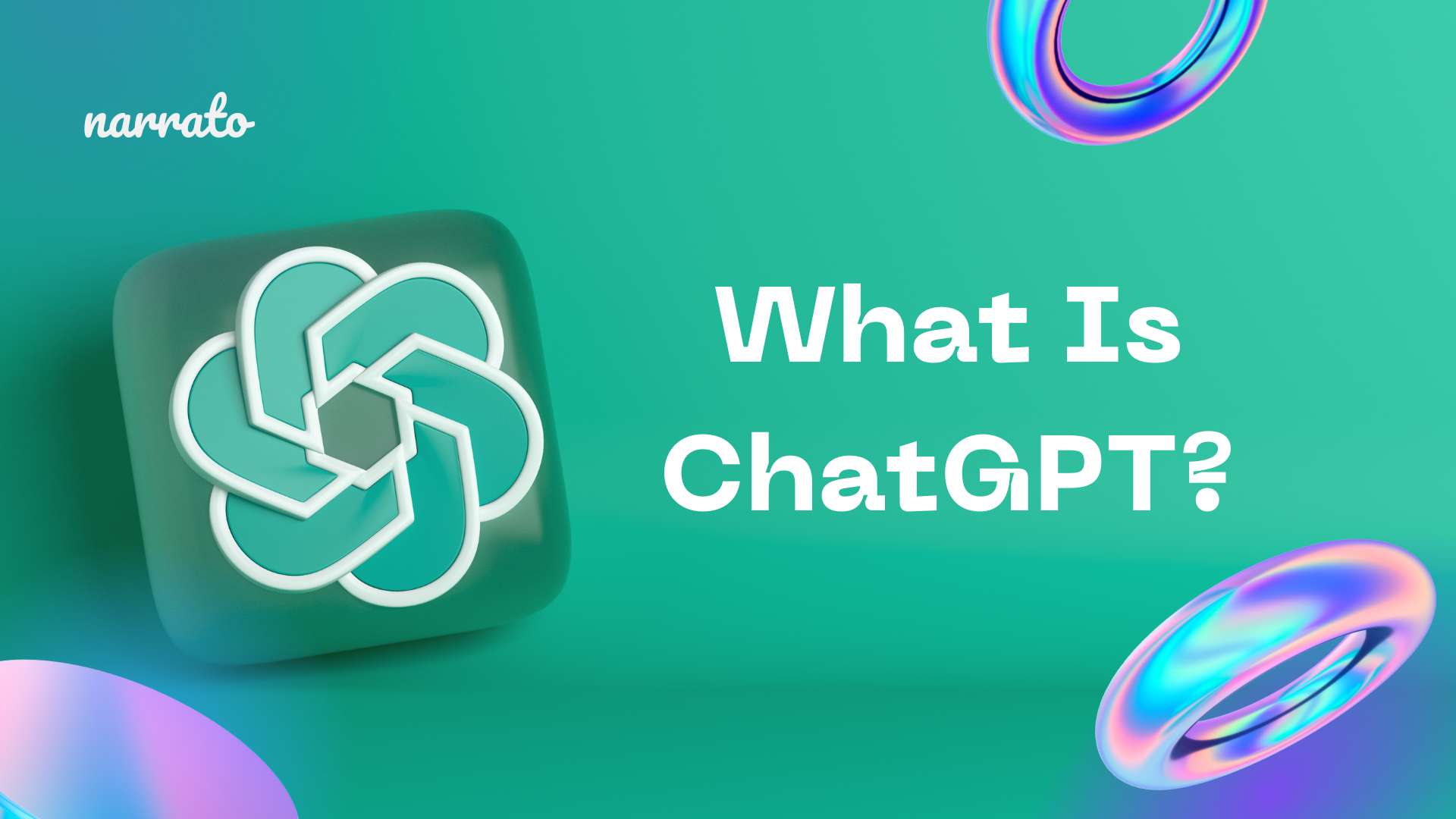If you’re up to date about generative AI technologies, then you’re surely aware of all the buzz that ChatGPT is creating in the industry. This new generative AI tool by OpenAI has taken the world by storm and even tech giants like Google are worried it might soon replace them if they don’t up their game. So what exactly is ChatGPT? How can you use ChatGPT in content marketing and other areas of your business? What are its scope and limitations? These are questions you should have answers to before you put ChatGPT to the test.
TL;DR Here’s a quick summary video of this article.
So here’s everything you need to know about ChatGPT and its uses.

What is ChatGPT?
ChatGPT is an AI chatbot developed by OpenAI. The tool is built on their GPT-3 large language models. ChatGPT can provide answers to your queries in a conversational format. It can offer answers on any topic and even help write and debug computer programming codes. The AI content generation tool is trained using supervised learning and reinforcement learning, with tons of data gathered from the internet and through actual conversations with human trainers. The grammar, structure, and tone in the output of this generative AI tool are very similar to how a human would interact with the user. This makes ChatGPT a great AI assistant for a number of business and personal use cases.
Despite the drastic improvements and the human-like text outputs, this large language model tool has its limitations too. We’ll be discussing more on that later.
How Does ChatGPT work?
ChatGPT works the same way as an AI chatbot does. When you type in your query, the chatbot predicts the next words to add to the sequence of text in your query. The algorithm creates a logical sentence and forms the response.
GPT stands for Generative Pre-trained Transformer, which is the fundamental technology underlying this tool. The transformer is trained to find patterns in a sequence of data that is fed to it. With what it learns from the training data, the transformer can predict the next words and sentences in a sequence.
ChatGPT was first trained on a large amount of data or text from the internet. This helped the tool learn grammar, structure, and other nuances of human-like writing. The responses produced from the first training were then reviewed and ranked by human trainers to further refine them.
ChatGPT is, in fact, still being trained as we use it. The data on how users interact with the tool is being gathered, and you can upvote and downvote the responses you get to improve ChatGPT. You may also offer additional feedback in the dedicated field provided with the upvote/downvote option.
What are the uses of ChatGPT?
Since its launch in November 2022, ChatGPT has become a phenomenon among individuals, professionals, and businesses alike. ChatGPT is being used for some of the common applications that you would expect, such as content creation, customer service, etc. But this powerful tool, and other similar generative AI tools, can have some unconventional use cases too. Let’s take a look at some of the ChatGPT use cases.
Content creation with ChatGPT
The most common use of ChatGPT is probably in content creation. Generative AI tools have always been used in content marketing to create a wide variety of content like sections of blog posts, social posts, emails, web and ad copy, and other short-form content. ChatGPT and other AI content creation tools can give you very accurate and relevant output with just a little input text and context.
On the Narrato AI writing assistant which also works on GPT-3 large language models, for instance, you can provide some text input like the title of your blog post and define the tone of voice. The AI blog writer then automatically generates blog post intros and outlines for you.
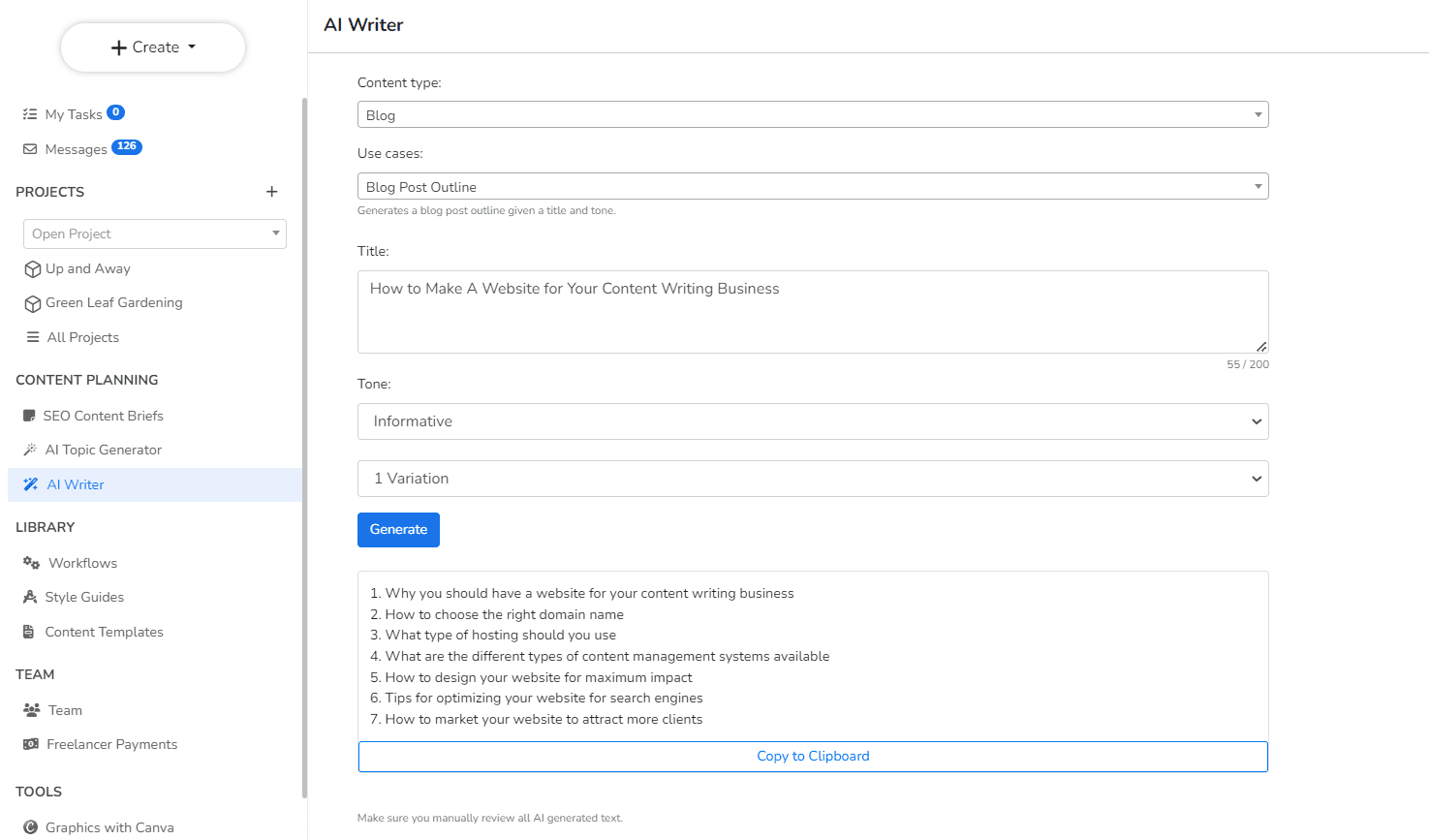
ChatGPT works almost the same way, except that you don’t have any additional field to define your tone or audience here. Whatever instructions you provide have to be included in your query itself. Here’s what we got from ChatGPT for the same blog topic in the above example.
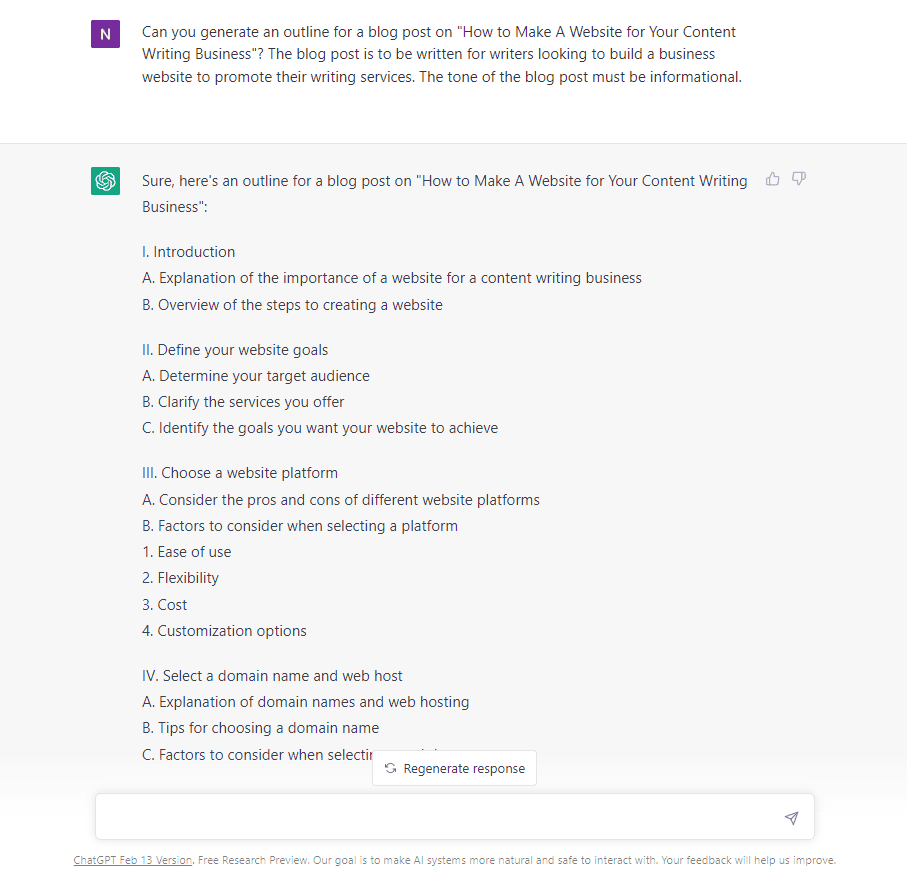
Topical research with ChatGPT
Another very useful application of ChatGPT is as a topical research tool. What we as marketers and content creators usually do is search for our target keyword/topic on Google. The top results that turn up are considered the most valuable sources so we collate data and knowledge from these sites. But there may be other useful sources on page 2 or 3 of Google search too. So we spend a lot of time scanning through at least the first 4 pages of search results to see what we can find. This process can be time-consuming and though it is always a good idea to refer to multiple sources, using an AI tool here can be more productive.
ChatGPT is a chatbot that also works like a search engine. When you ask a question, it refers to all the data it has been trained on to give you the most logical, comprehensive answer. This means that instead of collating and summarizing the research yourself, you can get it directly from ChatGPT.
We’ve seen that with the article outline in the example above. If you had to generate this outline from scratch with your own research, it would at least take an hour to come up with such a detailed framework. But the AI bot generates it in a matter of seconds. This use case of ChatGPT is getting so popular and effective, that search engines like Bing are actually integrating this technology into their search algorithm. There is even speculation and debate – will ChatGPT replace Google in the future?
ChatGPT refers to all the reliable and high-ranking sources online related to your topic to provide a summary of the research. But although the tool is highly accurate and efficient, it is advisable that you fact-check and ensure that the information provided is correct.
Content idea generation with ChatGPT
Generating new content ideas for your blogs, articles, etc. is another area where AI content tools excel. Content ideation, though seemingly an easy task, can be a time- and effort-intensive activity too. You narrow down your target keywords, do your research on what people may be looking for around these keywords, see what your competitors are writing about, and come up with topics that can outrank them. It is tougher than it seems.
ChatGPT and other AI content ideation tools can make this process a lot simpler by giving you ideas to build on. Narrato’s AI topic generator, for instance, gives you a list of topics/questions around your theme or keyword. Some of these topics may be ready for use, or you may modify them to hit the right chords with your audience.
Here’s an example.
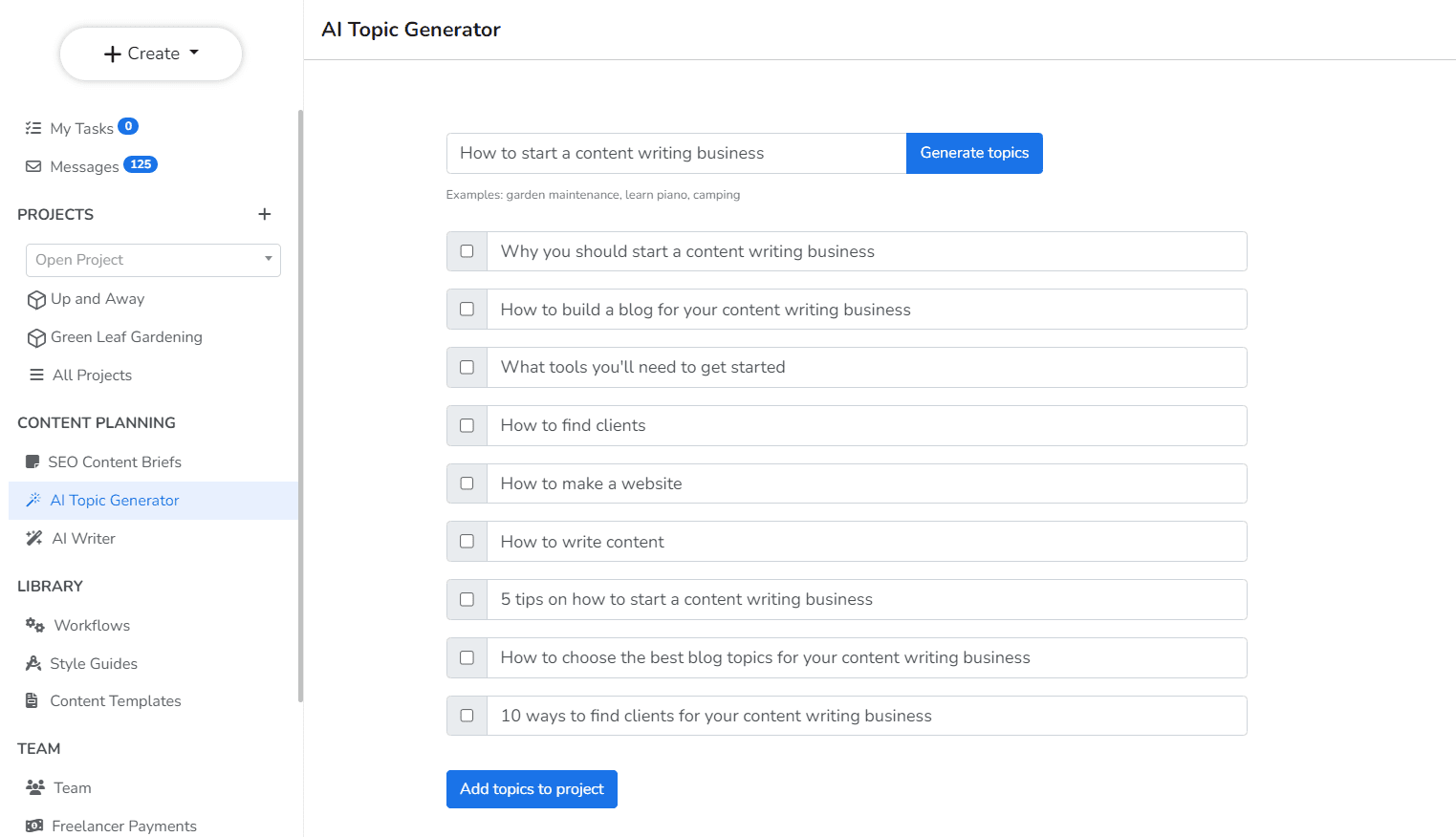
Also here’s what ChatGPT suggested around the same theme.
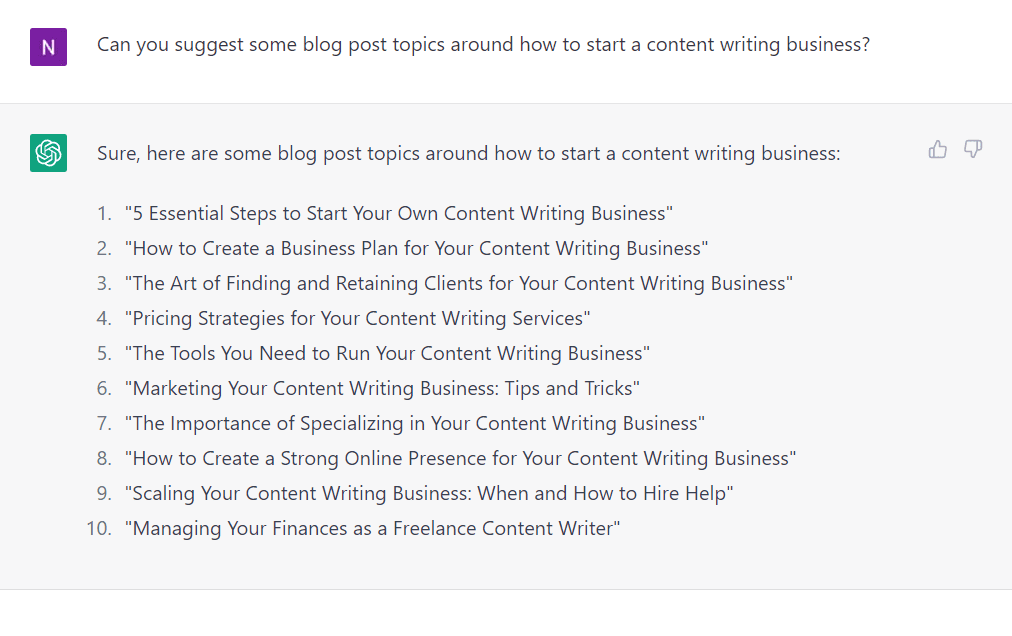
Using both tools in conjunction, you can fill up your content calendar with ideas for months at a go.

Summarizing and paraphrasing content with ChatGPT
Generative AI tools not only help create content but can also help improve the content you’ve already written. Sometimes you may need to summarize a long blog post into a quick read, or may want to repurpose content for social media. Activities like these may not have as much impact as creating new content does, but they still take up a lot of your time.
ChatGPT and AI tools like Narrato can help save time on tasks such as summarizing, paraphrasing, or improving content. On ChatGPT you can simply tell the bot what you need. For instance, ask the artificial intelligence to “summarize this blog post and cover all key aspects of it within 200 words” or to “paraphrase this section of text to make it easier to understand for a general audience”. Just add the context, and the tool will come up with its own succinct version of the content.
Here’s one we tried.
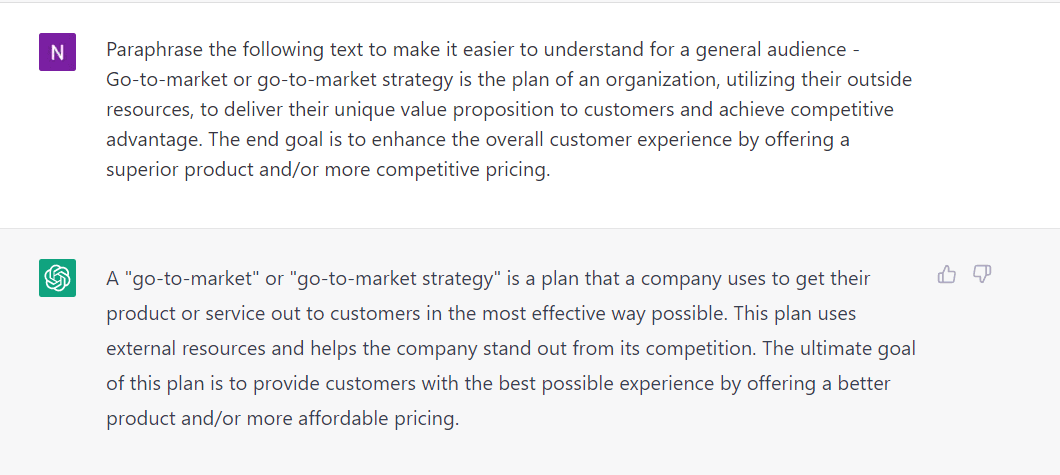
On Narrato, however, there is a dedicated use case each for paraphrasing, improving content, and expanding your sentences. All you have to do is enter your original text, choose the tone, and generate. Look at the example below.
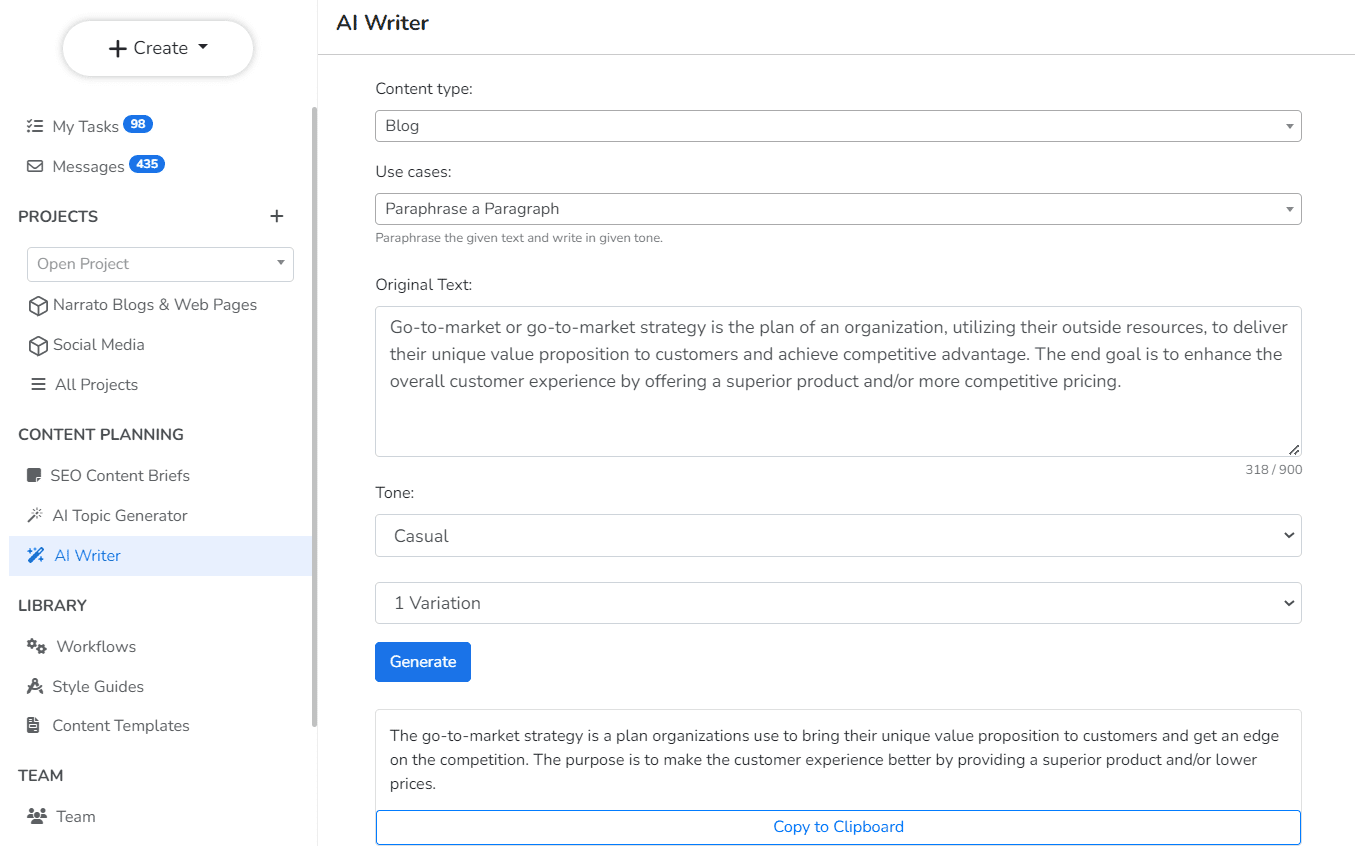
These applications of ChatGPT or Narrato can save you a lot of time in content editing too.
Keyword research with ChatGPT
When you’re doing your keyword research, you might often end up going down the rabbit hole to find what other related terms people could use for these searches. Before you know it, you could end up spending hours on this research. With artificial intelligence tools like ChatGPT you can, however, get targeted keyword research done within minutes.
Just ask the tool for alternate words for your target keyword, and it will give you all possible synonyms.
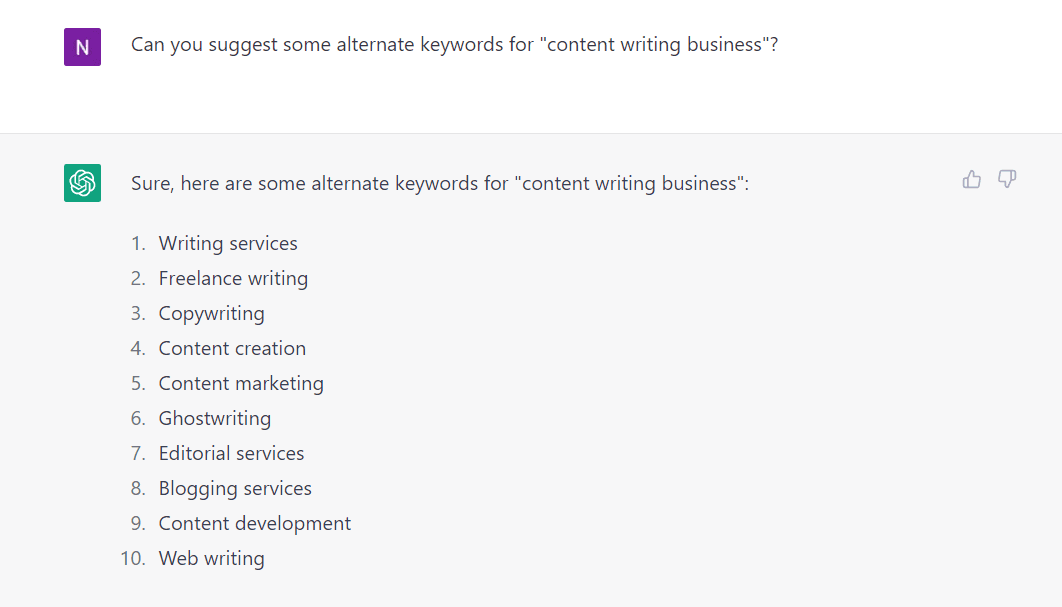
You can check the volume of these alternate keywords on keyword research tools like Google Keyword Planner and use them for optimizing different pages on your website, your PPC ads, your blog posts, and so on.
A/B testing of content versions with ChatGPT
A/B testing in marketing is a popular method of finding out which strategy, content type, etc. works best for the respective business goals. You can A/B test content versions too. For example, create two different versions of a marketing campaign content, split your audience and present the different versions to the different halves. This gives you an idea of which version is getting more clicks or driving more traffic to your site.
But creating two versions of content every time is added effort. ChatGPT can help with this as you can prompt the tool to generate two variations of text for the same input. This means you get two versions for A/B testing at half the effort.
Narrato’s AI writer also lets you generate up to three variations of text for every use case.
The insights from such A/B testing methods can help inform your content strategy for better results.
Training new hires with ChatGPT
A use case of generative AI tools and bots that you wouldn’t usually think of is for training your new hires. If you’ve just hired a new writer, for instance, and you want them to learn about the importance of content SEO in marketing, how to optimize content for search, etc. just set them up with ChatGPT. Give them a set of important questions to ask and let them interact with the AI bot to get the answers. This will save both you and your new hire a lot of time and trouble.
Getting new hires to learn the fundamentals of the trade doesn’t really need manual training. You can create training material, but that again is time-consuming and needs research. Instead asking them to get the answers from ChatGPT can be the easier way out. For the new hire too, it is easier than having to read tons of articles online. The experience is more interactive and they can go deeper into their research with follow-up questions if they want to.
Email marketing with ChatGPT
Email marketing is an integral part of content marketing too, and ChatGPT can help with this as well. From improving and personalizing the subject lines for your target audience to suggesting the right format and copy, ChatGPT can be used extensively to enhance your email marketing campaigns. You just need to make sure that you’ve provided the artificial intelligence with the right information about your campaign’s purpose and your target audience.
You can also generate email subject lines, outlines, and email marketing copy using the Narrato AI writing assistant.
ChatGPT can also analyze your email subscribers’ behavior, preferences, and interests to help you create personalized campaigns. It can suggest the best timings and frequencies of sending emails to ensure better open rates.
Advantages of ChatGPT
It goes without saying that ChatGPT as a productivity tool has numerous advantages for users, especially for users in the content creation and marketing space.
Here are some benefits of ChatGPT answer engine that are most evident
- Improved efficiency and accuracy in language-based tasks like content creation, customer interaction, etc.
- Increased speed and convenience in tasks such as content research and creation
- Potential for cost savings in industries relying on language-based tasks, replacing multiple apps with just one
- Ability to handle complex language tasks and understand context
Challenges of ChatGPT
Having discussed all the advantages and various use cases that the tool can help with, we should not forget that at the end of the day, it is still an artificial intelligence that has its limitations. Although ChatGPT is transforming multiple industries simultaneously, it is still learning. Not being aware of how to best use the tool can prove to be costly. We have discussed AI content creation mistakes to avoid on our blog before, and the same caution must be applied to ChatGPT too.
Here are some challenges that you may face when using ChatGPT and what you should do to avoid some of these common mistakes.
Concerns around bias and ethical considerations – ChatGPT and all other generative AI tools are trained on existing data. And this includes all kinds of data – biased, unbiased, ethical, and unethical. The artificial intelligence tool does not have its own judgment and though it is being trained to filter out sensitive or problematic content, it still has a long way to go.
When generating content using ChatGPT you may occasionally (though rarely) face issues like the use of biased data, inaccuracies in cultural references, or copyright infringement, to name a few. It is, therefore, advisable to always fact-check, proofread and check for plagiarism in the content before using it on your channels.
Human intervention is still necessary – For the above-mentioned reasons and for the sake of consistency and quality, some amount of human intervention is still mandatory when using ChatGPT for content generation. Human readers can tell when content has been written by another human or an AI bot. So your brand’s reputation depends on it. Moreover, AI content detection tools are making it even more difficult to take this shortcut. To avoid getting marked by these AI content detectors, it is important that you at least rephrase and slightly modify the content that ChatGPT provides you with.
The potential impact of ChatGPT on jobs – One of the biggest fears that humans are facing with the advent of tools like ChatGPT and advancement in AI technology is if it will leave us jobless. While these speculations have been doing the rounds for years and AI still hasn’t taken over our jobs thankfully, you cannot completely ignore the possibility. To avoid this from happening, both employers and employees must be aware of the consequences.
Employers must understand that artificial intelligence is only meant to assist humans and not replace them. The kind of emotional intelligence, power of judgment, and discretion that humans bring to the table cannot be replaced by any machine. AI can replicate human skills but cannot generate something out of pure creativity.
Employees on the other hand need to understand that technology is getting better and if they want to be indispensable to their organizations, they have to upskill. If you are just doing what a machine can do, sooner or later you will be let go. So use tools like ChatGPT to your advantage and improve your skills and capabilities to rise above them.
Final thoughts
ChatGPT is a phenomenon, and it deserves to be one. We have only listed a few use cases, but there are so many other ways you can use this text generator tool to level up your content marketing game. Try it out for any area of your content process where you think it can help and we’re sure you will be surprised by what it can do. Just ensure that you have some oversight on how you’re using the AI-generated text and you’re good to go. AI content creation tools are the present and future of the industry. The sooner you can get accustomed to and master them, the better your chances of toppling your competition in the race to the top.


